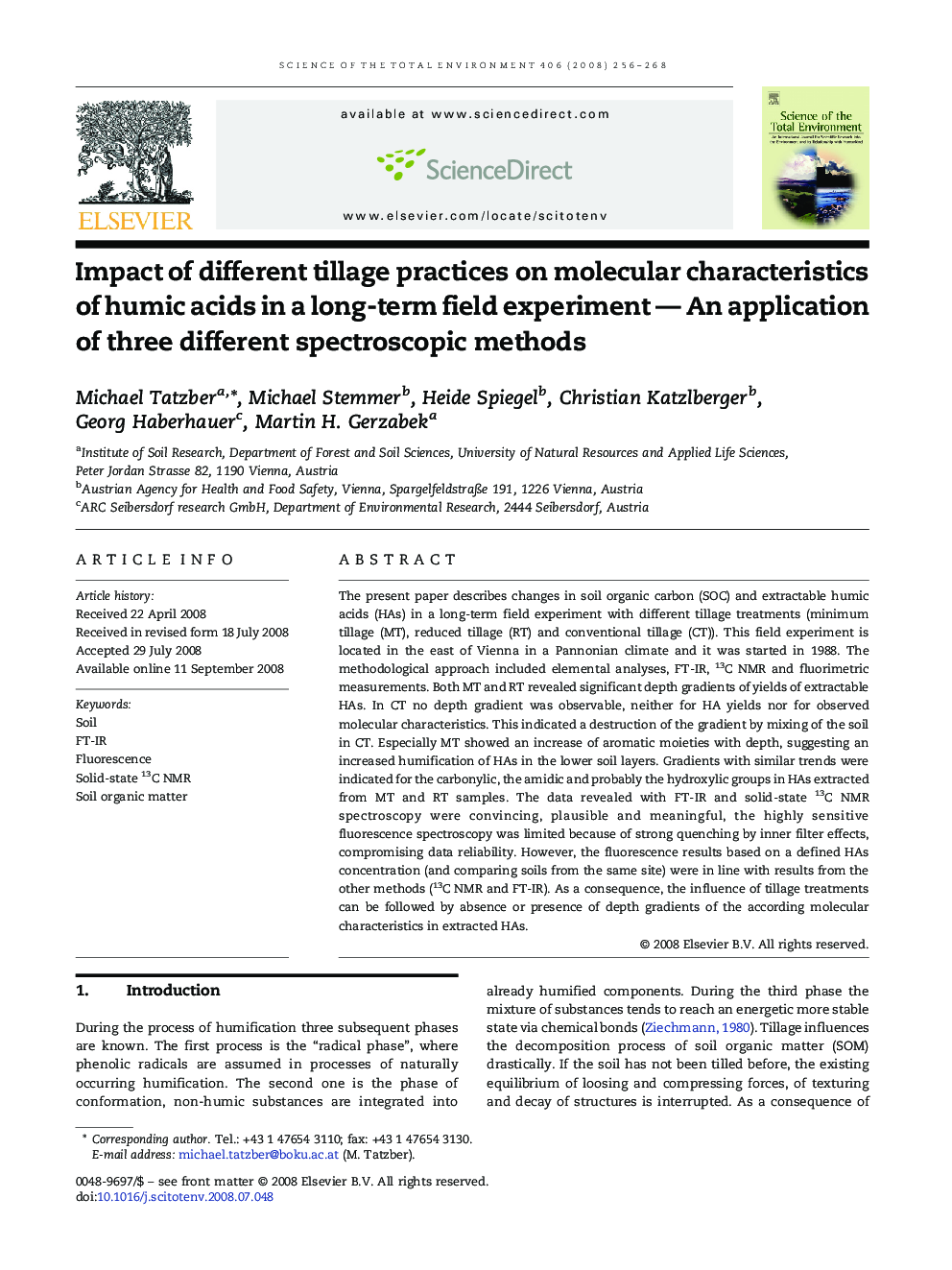| Article ID | Journal | Published Year | Pages | File Type |
|---|---|---|---|---|
| 4432587 | Science of The Total Environment | 2008 | 13 Pages |
The present paper describes changes in soil organic carbon (SOC) and extractable humic acids (HAs) in a long-term field experiment with different tillage treatments (minimum tillage (MT), reduced tillage (RT) and conventional tillage (CT)). This field experiment is located in the east of Vienna in a Pannonian climate and it was started in 1988. The methodological approach included elemental analyses, FT-IR, 13C NMR and fluorimetric measurements. Both MT and RT revealed significant depth gradients of yields of extractable HAs. In CT no depth gradient was observable, neither for HA yields nor for observed molecular characteristics. This indicated a destruction of the gradient by mixing of the soil in CT. Especially MT showed an increase of aromatic moieties with depth, suggesting an increased humification of HAs in the lower soil layers. Gradients with similar trends were indicated for the carbonylic, the amidic and probably the hydroxylic groups in HAs extracted from MT and RT samples. The data revealed with FT-IR and solid-state 13C NMR spectroscopy were convincing, plausible and meaningful, the highly sensitive fluorescence spectroscopy was limited because of strong quenching by inner filter effects, compromising data reliability. However, the fluorescence results based on a defined HAs concentration (and comparing soils from the same site) were in line with results from the other methods (13C NMR and FT-IR). As a consequence, the influence of tillage treatments can be followed by absence or presence of depth gradients of the according molecular characteristics in extracted HAs.
